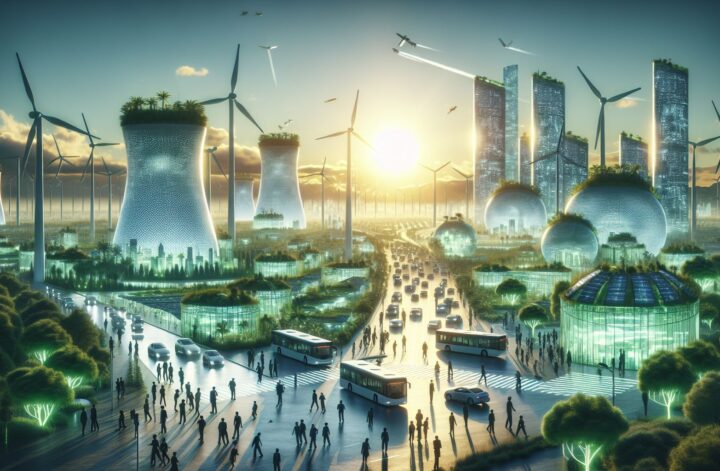In today’s world, where environmental concerns such as global warming and renewable sources of energy are of pressing importance, the necessity of tapping into green power generation has never been higher. Renewable energy stands out as a viable and sustainable solution to these global issues[^1^].
What is Renewable Energy?
Renewable energy, often referred to as clean energy, comes from natural sources that are continuously replenished. Many forms of renewable energy exist, each with unique advantages and inimitable capabilities for power generation. It encompasses multiple technologies like solar power, wind power, hydroelectric energy, tidal power, geothermal energy, and bioenergy (biomass and biofuel).
The Importance of Renewable Energy
There are several reasons why renewable energy is increasingly important in today’s world. Not only does it provide an environmentally friendly alternative to fossil fuels, but it also presents a virtually inexhaustible source of power. Promoting renewable energy sources could potentially lead to energy independence for some countries, promote job creation, stimulate economic growth, and reduce health risk due to pollution.
The Role of Bioenergy
Bioenergy, a subset of renewable energy, involves the use of organic materials to generate power. These materials, known as biomass, come from various sources, including wood, crops, seaweed, manure, and even garbage. When these substances are processed, they can further be transformed into biogas, heat, or electricity.
One of the leading methods of generating bioenergy is through anaerobic digestion. This process involves the decomposition of organic matter in an environment without oxygen. This decomposition process produces biogas, a mixture of mostly methane and carbon dioxide, which can be used as a renewable energy source[^2^].
Biogas Production Through Anaerobic Digestion
Anaerobic digestion is a series of biological processes where microorganisms break down biodegradable material in the absence of oxygen. This process happens naturally in environments like marshlands, deep bodies of water, and even inside the guts of certain animals. However, when purposefully harnessed, it can be a powerful method for producing biogas.
In the journey from biomass to biogas, a four-step process unfolds – hydrolysis, acidogenesis, acetogenesis, and methanogenesis. Each of these steps involves a unique group of bacteria, working together to transform the organic material into methane and carbon dioxide.
In its simplest form, an anaerobic digester design follows a two-phase approach. The first, the acid phase, takes care of the hydrolysis and acidogenesis steps, breaking down the large molecules in the biomass into simpler organic compounds. The second phase, the methane phase, picks up from there, transforming those simple compounds into biogas through the acetogenesis and methanogenesis steps[^3^].
Benefits and Challenges
The benefits of using anaerobic digestion as a means to produce renewable energy are manifold. It reduces reliance on fossil fuels, minimizes landfill waste, and decreases greenhouse gas emissions – all of which are significant steps towards combating climate change. Biogas as a byproduct can be utilized for heat and electricity generation or can be upgraded to biomethane for vehicle fuel or injection into the gas grid.
There are, of course, challenges to this process as well. Balanced proportion of nutrients, optimal temperature, and pH conditions are necessary to maintain the health and productivity of the bacterial communities responsible for the digestion. Inhibition of anaerobic digestion due to ammonia, sulfide toxicity, and lack of essential trace elements supplementation are common issues. Predicting these and improving system resilience is the key focus of ongoing research.
The Future of Renewable Energy
As the world continues to grapple with the cascade of environmental issues, renewable energy, specifically bioenergy, appears as a beacon of hope for a sustainable future. With advanced technology, increased investments, continuous research, and government support, renewable energy’s future looks bright full of potential – a potential our planet critically needs.
While challenges persist, they will not deter the march towards a more sustainable future because the need for renewable energy has never been more urgent and apparent. Through broader adoption of renewable energy solutions and greater public awareness, we move closer to a sustainable future for the generations to come.
Sources
[^1^]: International Renewable Energy Agency (IRENA). “Renewable Energy Benefits: Leveraging Local Capacity for Solar PV.” 2020. Read the report
[^2^]: U.S. Energy Information Administration (EIA) “Energy Explained: Biogas.” Component of the U.S. Department of Energy. 2019. Read more
[^3^]: Demirel, Burak, and Yenigün, Orhan. “Anaerobic digestion of dairy wastewater by inverse fluidization: the effects of organic loading rate, hydraulic retention time and recycle ratio.” Bioresource Technology. 2012. Read more




